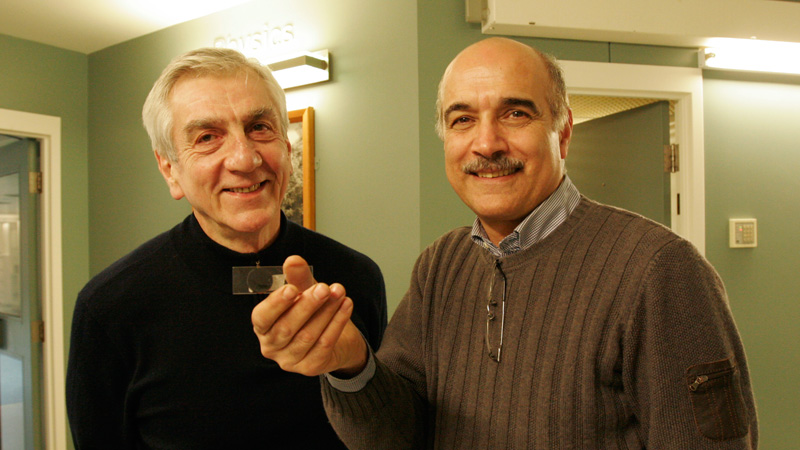 Bozidar Mitrovic, left, and Fereidoon Razavi joined forces with Frans Koffyberg to be the first in Canada to prove the existence of high-Tc superconductors.
Bozidar Mitrovic, left, and Fereidoon Razavi joined forces with Frans Koffyberg to be the first in Canada to prove the existence of high-Tc superconductors.
Bozidar Mitrovic, left, and Fereidoon Razavi joined forces with the late Frans Koffyberg to be the first in Canada to prove the existence of high-Tc superconductors.
It was one of the biggest advancements in physics in years, and Brock was a part of it.
The high-Tc superconductor – which is composed of a compound of the metals barium, lanthanum, copper andoxygen – meant that energy could be conducted in a faster, easier and less expensive way than it had previously. Twenty-five years ago, its existence was postulated in a paper published by Swiss researchers from IBM’s Zurich laboratory who went on to win the Nobel Prize in Physics.
But Brock researchers were the first in Canada, and the second in the world, to prove that it worked.
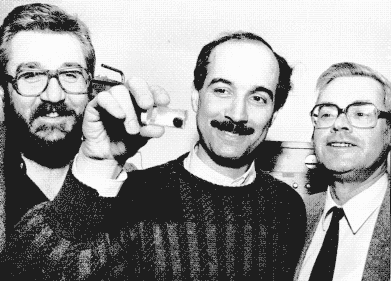
Mitrovic, Razavi and Koffyberg in 1986
More than two decades later, Professors Fereidoon Razavi and Bozidar Mitrovic, who still work at Brock, remember the discovery well. They did it alongside Professor Frans Koffyberg, who had attracted the funding and equipment required to do the research. Razavi encountered the Swiss article in the James A. Gibson Library in early December. The trio knew that the rest of the physics world would be racing to produce a superconductor.
They worked through the Christmas break of 1986-87, shivering in the closed university in a rush to produce and publish. They submitted their paper to the prestigious journal Physical Review hours after the IBM team. Their work was groundbreaking enough that it was not only published in the journal, but cited in the Nobel Prize lecture. It was a pivotal moment for the young Physics department of a 23-year-old university.
High-Tc superconductors are widely used today, such as in the powerful magnets of Magnetic Resonance Imagers (MRIs), or in the electrical distribution systems inside nuclear-powered submarines. Such flexibility in application was difficult to achieve for traditional superconducting wires, made from brittle metal alloys that must be cooled to 20 degrees absolute (-253 degrees Centigrade or -423 degrees Fahrenheit) using helium, which is costly and difficult to handle. High-Tc superconductors solve this problem. In the Physics lab, the professors produced a metallic compound that put the Swiss theory into action.
The professors look back fondly on the discovery and the rush of inspiration it brought. When Mitrovic, a Yugoslavian-born scientist, was a post-doctoral researcher at Stony Brook University on Long Island, a professor advised him “When someone shows you interesting results, be prepared to drop whatever you’re doing.” Mitrovic now dispenses the same advice.
“If you have a feeling you can contribute,” Mitrovic said, “it’s important to set aside what you’re doing and do it.”
The late Koffyberg, a Brock professor from to 1965 to 1993, felt the same way.
“When you have something this hot, you drop everything,” he said in a 1987 media release.
Mitrovic, who joined Brock in 1983, continues to research superconductivity and teaches astronomy and quantum mechanics. He won a Faculty Award for Excellence in teaching at the Spring 2011 Convocation. Razavi, a Tehran-born scientist, received government funding in 2010 for “The Physical Property Management System for research on electronic and magnetic properties of materials and thin films of compounds.” He teaches electromagnetism, experimental physics and condensed matter physics.
Their contribution is worth commemorating, said Ed Sternin, chair of Physics. It was one of the first papers produced by Brock researchers that had a worldwide impact.
“In the words of Professor Mitrovic, it is rare that one comes so close to the frontier of science,” he said. “I’m proud that it happened here.”



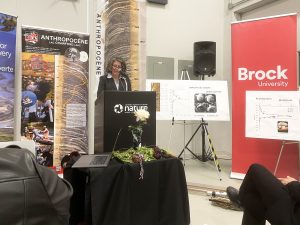

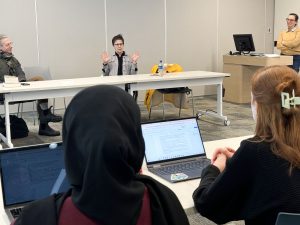



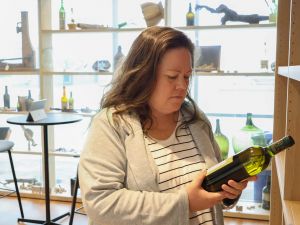
Professor Mitrovic once mentioned in one of his Astronomy lectures, that “if you don’t bend over backwards, you don’t do science.”
I never fully understood what he meant, but now, knowing his contributions to the field of science — specifically physics — I think I have a better understanding of what he meant.
I majored in physics at Brock back in the mid 70’s and have fond memories of Frans Koffyberg, having worked on ultra low pressure thin film depostion under his tutelage and having him as my professor for numerous courses. I am proud to have attended Brock knowing that Dr. Koffyberg and the physics department were able to make such an amazing discovery. I am now retired but still have excellent memories of my years studying physics at Brock.
Professor Razavi is an impressive researcher. I was so fortunate to do my Mater’s in Physics under his supervision. His expertise in Condensed Matter Physics for conducting research along with his charming character made me more progressive and productive with my research. I am proud of his contribution to high Tc superconductors.
I studied with Prof. Koffyberg in the late 70s too. In fact I went to Brock from the UK in order to do my MSc with him. He was a very inspiring man. I remember well his ‘Defect Solid State’ physics course and his X-ray lab. Good memories!